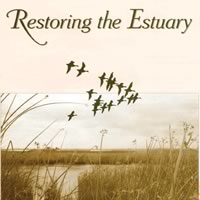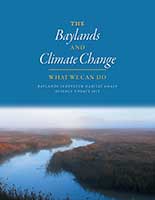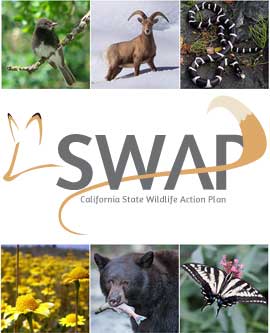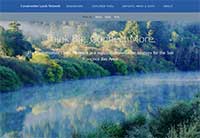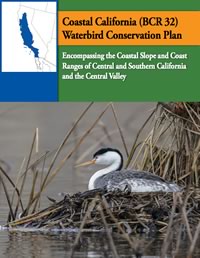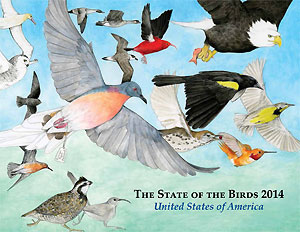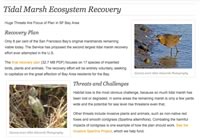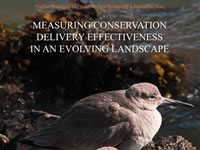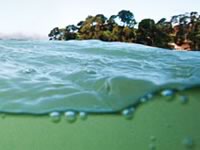Planning
The North American Waterfowl Management Plan (NAWMP)
Signed in 1986 by the US and Canada, and then in 1994 by Mexico, the North American Waterfowl Management Plan is the foundational bird conservation partnership upon which many others are built.

In 1986, recognizing the recovery and perpetuation of waterfowl and other wetland wildlife depend on the restoration of wetlands, the United States and Canada developed a strategy to help recover these shared resources. This strategy became the North American Waterfowl Management Plan.
Both innovative and visionary, it became foundational to bird conservation partnerships resulting in the establishment of Joint Ventures, including the San Francisco Bay Joint Venture. While its scope is international, its implementation occurs at the regional level, thus relying on groups like Joint Ventures to be implemented.
Since its creation, the plan has embraced an adaptive cycle of reviews and updates to strengthen its biological foundations, expand and redefine its habitat restoration goals, and forge broader alliances with other bird conservation initiatives. Over the years, the focus of NAWMP has been on waterfowl, their habitats, and the people who value them. Learn more about the Plan over time here.
The 2012 plan revision provides a renewed vision for the future of waterfowl and wetlands conservation with far-reaching and visionary steps to address current and future conservation challenges. Another update is slated for release in September 2018 and will advance the legacy of previous Updates while highlighting achievements made by the waterfowl management community toward the goals, objectives and recommendations of the 2012 Revision.
Some of the outputs from the 2012 document include:
In 2015 a human dimensions working group coordinated surveys conducted by multiple principal investigators to better understand the attitudes, motivations, and behaviors of waterfowl hunters and birdwatchers in the U.S. and Canada, and the general public in the U.S in order to accomplish the goal of increasing the numbers of waterfowl hunters, other conservationists, and other citizens who support waterfowl and wetland conservation. The results of these surveys can be found by group:
North American Waterfowl Management Plan Survey Summaries - these are summaries of responses to the surveys that were given to more targeted audiences as indicated in the links below:
In December, 2018, the NAWMP Plan Committee released a Plan Update to highlight achievements and demonstrate the adaptation and resilience that has made the Plan a success for over 30 years. This update may be found here. Major accomplishments and sources of input guiding the 2018 Update include an assessment of waterfowl management institutions (measuring progress on each of the seven 2012 Recommendations); a survey of waterfowl and wetland professionals; input from the Future of Waterfowl II Workshop held in September 2017; and surveys of hunters, birdwatchers and the general public in the U.S. and Canada.
National Bird Conservation Plans and Other Initiatives
NAWMP, is one of four migratory bird conservation initiatives that provide guiding principles for SFBJV biological planning and conservation design. The major role of the four initiatives is to establish a continental foundation for bird conservation.
NABCI, the North American Bird Conservation Initiative, was established in 1999 to help facilitate partnerships across this national bird conservation community. Each Joint Venture must then translate these continental conservation objectives into meaningful regional scales.
In 2004, the SFBJV contracted with Point Blue to draft a guiding document to summarize the bird conservation goals, priorities, recommendations, and other information within these plans that isdirectly relevant to the San Francisco Bay region and will ultimately integrate this information into the SFBJV Implementationplan revision (likely release slated for some time in 2019).
SFBJV Implementation Plan
In 2001 the San Francisco Bay Joint Venture published a 20-year collaborative plan for the restoration of wetlands and wildlife in the Bay region called Restoring the Estuary: an Implementation Strategy for the SFBJV. All 26 organizations and agencies on our management board have approved it. This Strategy establishes specific acreage goals for wetlands of three distinct types - bay habitats, seasonal wetlands and creeks and lakes, and lays out programmatic and cooperative strategies for accomplishing them. The Joint Venture partners have agreed to acquire, and/or restore or enhance 200,000 acres of these three types of wetlands over the next two decades all around our estuary. Restoring the Estuary builds on the science-based recommendations of the San Francisco Estuary Baylands Ecosystem Goals Project (1999), by reaching beyond the Bay's margins and into the watersheds to determine acreage goals. Together, these goals, objectives and strategies will help guide the renewal of the wetland ecosystem rimming the Bay that defines our region.
Individual chapters of the Summary and Report are available here
Restoring the Estuary is currently under revision with a goal of being completed by the winter of 2021/2022. Other plans and guiding documents influencing the updates can be found below. If you are interested in learning how your project can satisfy the guidelines outlined by the SF Bay Restoration Authority for Measure AA funds with regard to "being consistent with the San Francisco Bay joint Venture’s Implementation Strategy” please contact Sandra Scoggin.
Other Regional Strategies that Influence the JV
Comprehensive Conservation Management Plan
Lead Agency: San Francisco Estuary Partnership
Release Date: September 2016
The Comprehensive Conservation and Management Plan for the San Francisco Estuary (the Estuary Blueprint) provides 32 priority actions over the next five years for achieving a healthier Bay and Delta. The result of the collaboration of over 100 scientists, regulators, businesses, municipalities, non-governmental organizations, and citizens, this Estuary Blueprint reflects the consensus of government agencies and non-profits concerned with the health of the Estuary.
Baylands Ecosystem Habitat Goals Report Technical Update
Project Lead: State Coastal Conservancy and Baylands Goals Steering committee
Updated: October 2015
The Technical Update to The San Francisco Baylands Ecosystem Habitat Goals report, aims to synthesize current scientific knowledge regarding climate change impacts on the Baylands and to develop recommendations for management actions to ameliorate those impacts.
State Wildlife Action Plan California
Project Lead: California Department of Fish and Wildlife
Released: 2015
California’s distinctive topography and climate have given rise to a remarkable diversity of habitats that support a multitude of plant and animal species. In fact, California has more species than any other state in the U.S. and also has the greatest number of species that occur nowhere else in the world. Many of the places where wildlife thrive are the same as those valued for recreation and other human activities. To ensure a sustainable future for wildlife – and the enjoyment of wildlife by generations to come – there is a need for a collaborative approach to conservation.
Conservation Lands Network
Project Lead: Bay Area Open Space
Released: 2014, 2019
The Conservation Lands Network (CLN) is a regional conservation strategy for the San Francisco Bay Area, with a set of goals and science-based decisionmaking tools that support strategic investments in land protection and stewardship. These tools focus conservation in areas that represent the region’s biodiversity and support ecological function across the nearly 5 million acres that comprise the 10 Bay Area counties.Updated in November 2019, CLN 2.0 equips the Bay Area to respond to climate change, connect landscapes, and connect upland and bayland conservation.
Coastal California (BCR 32) Waterbird Conservation Plan
Project Leads: David Shuford, Point Blue Conservation Science and Rob Doster, U.S. Fish and Wildlife Service, Region 8
Released: March 2014
This plan covers the U.S. portion of Bird Conservation Region (BCR) 32, which encompasses the coastal slope and Coast Ranges of central and southern California and the Central Valley. The plan covers 46 species of waterbirds and provides a framework whereby a partnership of individuals and institutions can implement the broader initiative's vision regionally by sustaining or restoring the distribution, diversity, and abundance of populations and habitats of breeding, migratory, and nonbreeding waterbirds in BCR 32.
State of the Birds Report - United States of America
Project Lead: U.S. Fish & Wildlife Service, National Audubon, The Cornell Lab of Ornithology, American Bird Conservancy, North American Bird Conservation Initiative and others
Released: 2009-Present
Each report reveals population trends and the influences of various impacts on them including climate change, public lands, private lands and organized efforts to positively change the patterns of decline.
Tidal Marsh Recovery Plan
Project Lead: USFWS
Released: November 2013
The plan provides scientific research and recommendations meant to save 17 struggling species of plants and animals. It also includes estimates of the time and costs necessary to implement the recommended actions to recover the listed species to the point where they can be downlisted or removed from the endangered species list.
SFBJV Monitoring and Evaluation Plan Phase 1
Project Lead: San Francisco Bay Joint Venture
Released: Winter 2011/12
The San Francisco Bay Joint Venture (SFBJV) Monitoring and Evaluation Plan (M&E Plan) offers a 20-year region-wide monitoring and research framework to measure the effectiveness of SFBJV partner conservation delivery actions. The implementation of the M&E Plan will benefit and provide information and guidance to the regional SFBJV community, conservation and science partners, regulatory agencies, decision makers and funding institutions.
State of the Birds Report – SF Bay Area
Project Leads: Point Blue Conservation Science and SF Bay Joint Venture
Released: 2011
This is the first-ever State of the Birds report for San Francisco Bay summarizing the current state of knowledge on the Bay’s bird populations and detailing the actions needed to keep birds and their habitats thriving as sea levels rise and extreme storm events increase due to global climate change.
Subtidal Goals Report
Project Lead: State Coastal Conservancy, NOAA, San Francisco Bay Conservation and Delivery Commission and San Francisco Estuary Partnership
Released: 2010
This report describes six subtidal habitat types with maps showing their known current distributions, and analyzes present-day threats to those habitats. It presents recommendations for addressing those stressors, for advancing scientific research and understanding, and for protecting and restoring subtidal habitat within the constraints and challenges of an urbanized estuary, and of incomplete knowledge. It also describes some of the pioneering efforts that have taken place to restore subtidal habitat in the bay.
![RESTORING THE ESTUARY, Executive Summary, A Strategic Vision for the Restoration of Wetlands and Wildlife in the SF Bay Area [1.1 MB PDF] Restoring the Estuary](images/restoring-the-estuary-300w.jpg)
